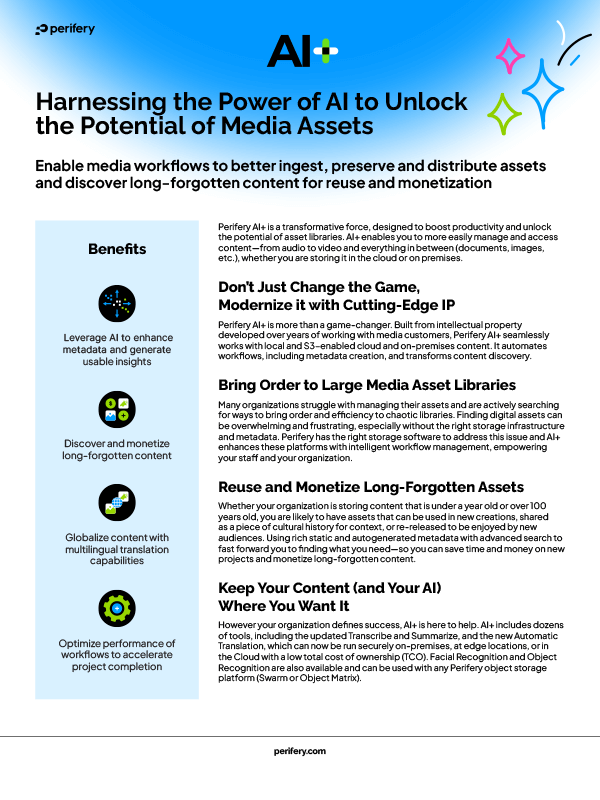
Last week, we had the privilege of attending the DPP Leaders’ Briefing 2024 in London—a unique opportunity to hear from senior executives at over 30 major media organisations. As always, the event delivered invaluable insights into the priorities, challenges, and opportunities shaping the future of the media and entertainment industry.
The overarching theme this year? The balance between innovation and practicality. From discussions on AI and sustainability to the importance of partnerships and understanding the broadcast sector’s unique needs, the sessions were as thought-provoking as they were informative.
AI: A Tool in Its Infancy
One of the most discussed topics was the role of artificial intelligence in media. As Peter Watling, Senior Sales Director, noted, “AI was compared to a 10-year-old child—capable of incredible things in specific areas but requiring oversight and careful guidance.”
While many broadcasters are eager to explore the potential of AI, they’re approaching it cautiously. This isn’t about chasing buzzwords; it’s about deliberate experimentation in controlled environments to see how AI can genuinely enhance operations and outcomes.
Our Global Marketing Director, Leanne Tomlin, noted during Larissa Görner, CTO at Proximus Media House, speaker session: “You have to go slow, teach it, and always be in control.” This pragmatic view mirrors our philosophy at Perifery: making technology work for you – not the other way around.
George Maddocks’, Solutions Architect, perspective added a layer of realism stating how “AI was repeatedly noted as being immature and unreliable, with at least one executive stating that it’s not an enterprise technology. The industry seems caught in a paradox—dedicating substantial effort to AI while openly acknowledging its limitations. This signals the importance of focusing on practical solutions that add immediate value rather than chasing aspirational tech for its own sake.”
Jonathan Wray, Regional Sales Manager, further contextualised this by pointing out the divide in AI adoption. While many broadcasters remain sceptical, NBCU emerged as an outlier, sharing success stories that demonstrate AI’s potential when paired with robust strategies and implementation. This underscores the importance of taking a measured, purpose-driven approach to AI deployment.
Innovation with Purpose
A key takeaway was the growing demand for purpose-driven innovation. Peter highlighted how broadcasters and content providers are looking for solutions that:
- Improve customer offerings through better price, performance, and access.
- Deliver real value—innovation must address specific pain points rather than being implemented for its own sake.
- Prioritise sustainability, particularly in government broadcasting. Vendors are expected to demonstrate clear, actionable steps toward sustainable operations.
George further contextualised this by highlighting the financial pressures facing the industry. “With linear advertising revenue in decline major networks like A+E and Disney are vocal about the need to do more with less due to cord-cutting and the transition to streaming. Broadcasters are explicit: they need immediate value-driven solutions, not aspirational or experimental technologies.”
This focus on pragmatism extends even to content delivery. For example, rather than adopting Ultra High Definition (UHD) at scale, many broadcasters are opting for better colour spaces in HD. The return on investment for UHD simply doesn’t justify the cost of transmission.
Jonathan noted an additional factor contributing to the industry’s cautious stance: the economic constraints and tightening budgets faced by many broadcasters. These pressures are driving a shift towards optimisation, with an emphasis on technologies that enhance existing systems rather than introducing unnecessary complexity.
Partnerships as the Foundation of Progress
Another recurring theme was the importance of strong, honest partnerships between vendors and broadcasters. The era of quick sales and stagnant solutions is over. Broadcasters want partners who:
- Innovate continuously and adapt to changing needs.
- Commit to the long term, fostering trust and collaboration over time.
- Understand the unique challenges of broadcasting while also helping modernise outdated practices to keep pace with new technologies.
George also noted a significant issue holding the industry back: outdated digital supply chains (DSC). “A substantial amount of potential profit is lost in inefficiencies between packaging for distribution and actual distribution itself. Addressing this should be a priority for the industry as it seeks to modernise while managing tight budgets.”
Jonathan reinforced the critical role partnerships play, particularly in addressing the gap between aspiration and practical implementation. “Whether it’s AI, cloud workflows, or sustainability initiatives, collaboration remains key to delivering value while navigating financial and operational constraints.”
Looking Ahead
As always, the DPP Leaders’ Briefing reminded us that while the media industry is evolving rapidly, change is rarely seamless. Technology may advance quickly, but adoption often lags behind, creating a gap that vendors must bridge with thoughtful, value-driven solutions.
For us at Perifery, this event reaffirmed the importance of staying customer-focused, solution-oriented, and adaptable. Whether it’s through leveraging AI, driving innovation, or fostering long-term partnerships, our mission remains clear: to help our clients deliver exceptional services in a rapidly changing world. We look forward to building on these insights in 2025 and continuing to work alongside our partners to navigate this dynamic landscape. Make sure to get in touch with our experts to hear more about our media-focused solutions, or if you’d like to discuss any of the topics mentioned throughout this blog.
